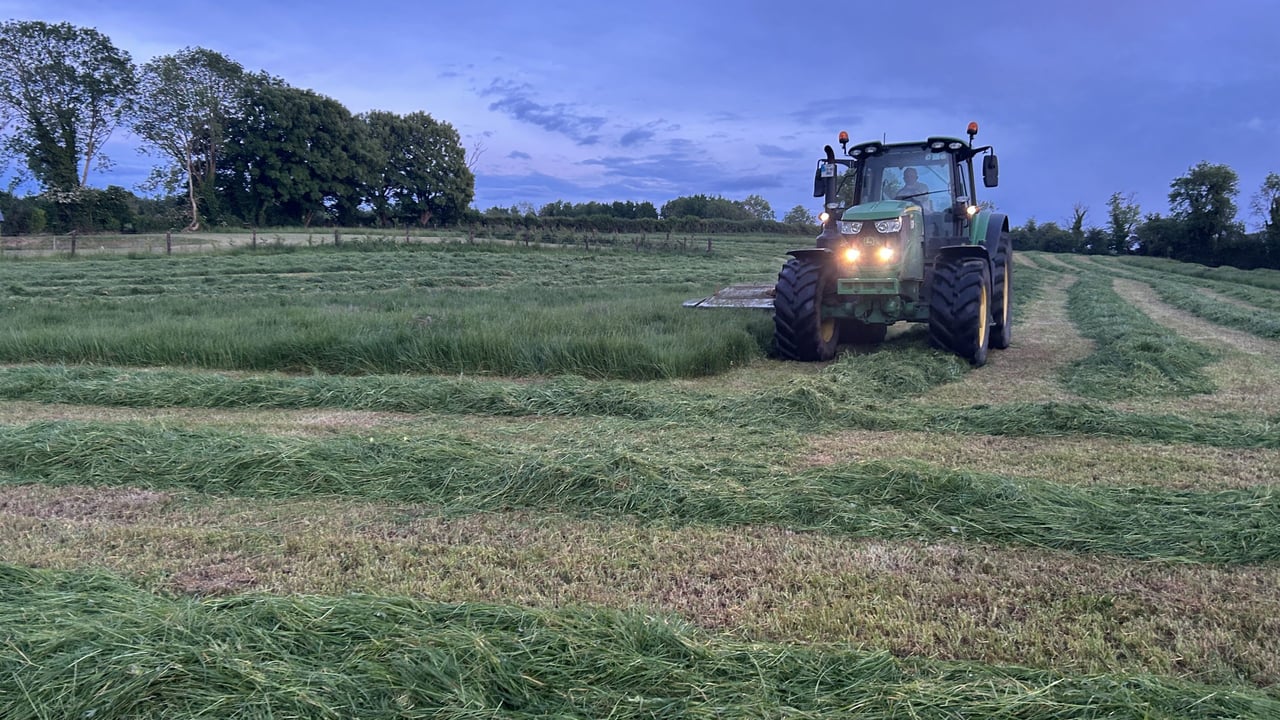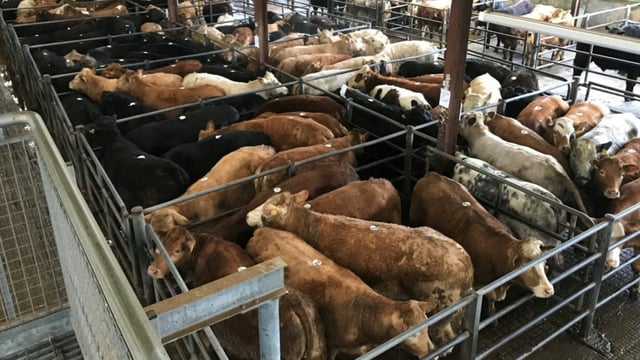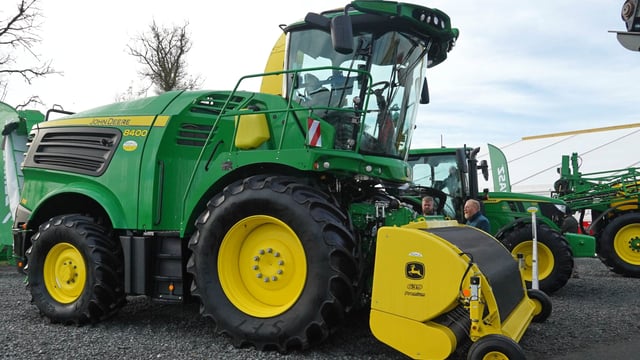Weather offering chance for securing second-cut silage
The weather for the week looks to be dry with sunny spells, according to Met Éireann, offering perfect conditions for second-cut silage to be cut and drawn in.
Met Éireann said: "The Azores High will build this week with warm and settled weather to come. Becoming very warm or even hot from Thursday."
With the weather looking promising until at least the weekend, it is offering farmers a chance to secure a quality second cut of silage.
The same points apply to second-cut as to first-cut, which is ensuring a cut earlier in July will ensure a quality second-cut as long as the crop is fit with relatively good bulk.
Delaying second-cut silage will lead to a lower dry matter digestibility (DMD) and may affect overall silage yield, if a farmer is aiming for a third cut of silage - so, it is about getting a balance between quality and quantity.
Many farmers' first cuts of silage were at least a week to 10 days earlier than usual, which means that the second cut should be no different.
Although reports suggest that first-cut yields were down a bit, it does not mean you should be aiming for a bulky crop with little quality.
A balance needs to be struck, as cows will only leave a lot of poor quality stuff behind them.
While most of your milking cow and young stock silage will have been made through the first cut, you can never have enough quality silage in the yard.
Realistically, farmers are only going to need dry cow silage for about 10-12 weeks of the winter. The remaining weeks and into the spring are going to require a higher quality silage for milking cows.
As the proportion of stem in poor quality cut increases, it will negatively impact on digestibility and the protein supply from he silage.
If the crop on the farm is heading, this weather window should be utilised.
Many farmers were left with extra silage in their yard after the winter this year, but was that because it was poor quality silage and cows’ intakes were limited due to the amount of fibre in the forage?
Farmers often put off cutting silage because of the nitrogen (N) levels in the grass, but a useful guide for fertiliser N is that grass uses 2.5kg N (2.0 units) per day on average, so final N should be applied approximately 50 days before planned cutting date.
However, this rule should be used as a guide and should not preclude you from cutting if weather conditions are suitable.
Instead, test the grass crop for sugars rather than sticking rigidly to the ‘2-unit rule’.
Weather is a huge variable when it comes to making silage and, when unexpected weather arrives, the cutting date can be delayed.
When a weather window like the current one arrives and the crop is ready, farmers should try and take the good weather as it comes, especially as quality and quantity is well balanced at this point.
The ideal time to start mowing down is in the late-afternoon or evening when the dew is completely gone, there has been hours of sunshine, and grass sugar levels are high.
The higher the sugar content in the grass, the more food for bacteria and the quicker pH levels drop. The target sugar content to ensure good fermentation is 3% or higher.
When silage is knocked , many farmers will opt to tether the grass out – this should be done in ideal conditions immediately after it is knocked.
If conditions prove to be extremely dry with a lot of sun, there might be no need to tether it out as over-handling the grass in conditions like that can often lead to over-wilting.
This can also occur if the grass is tethered too many times, and only leads to dry silage, unstable pit faces, and in some cases, increased susceptibility to secondary fermentation, heating, and energy loss.
If the grass is left to wilt for 24 hours and no more, it will have a good chance to dry out and build up a dry matter content of about 25%.
If you are eyeing up a potential third cut of silage, the earlier into July the silage is harvested, the more leeway you have to bulk up third-cut silage and harvest it in late August, when the weather is still favourable.





